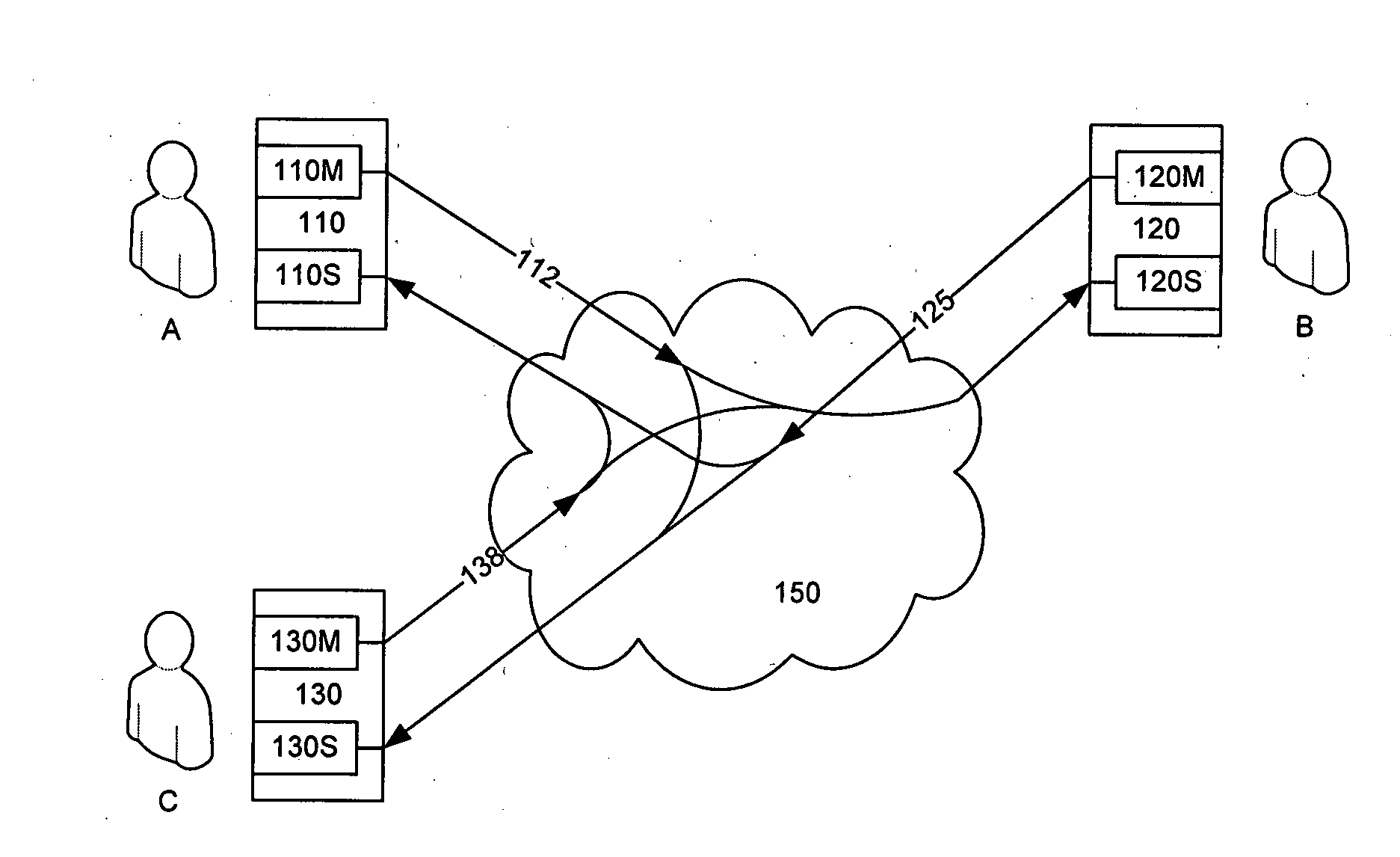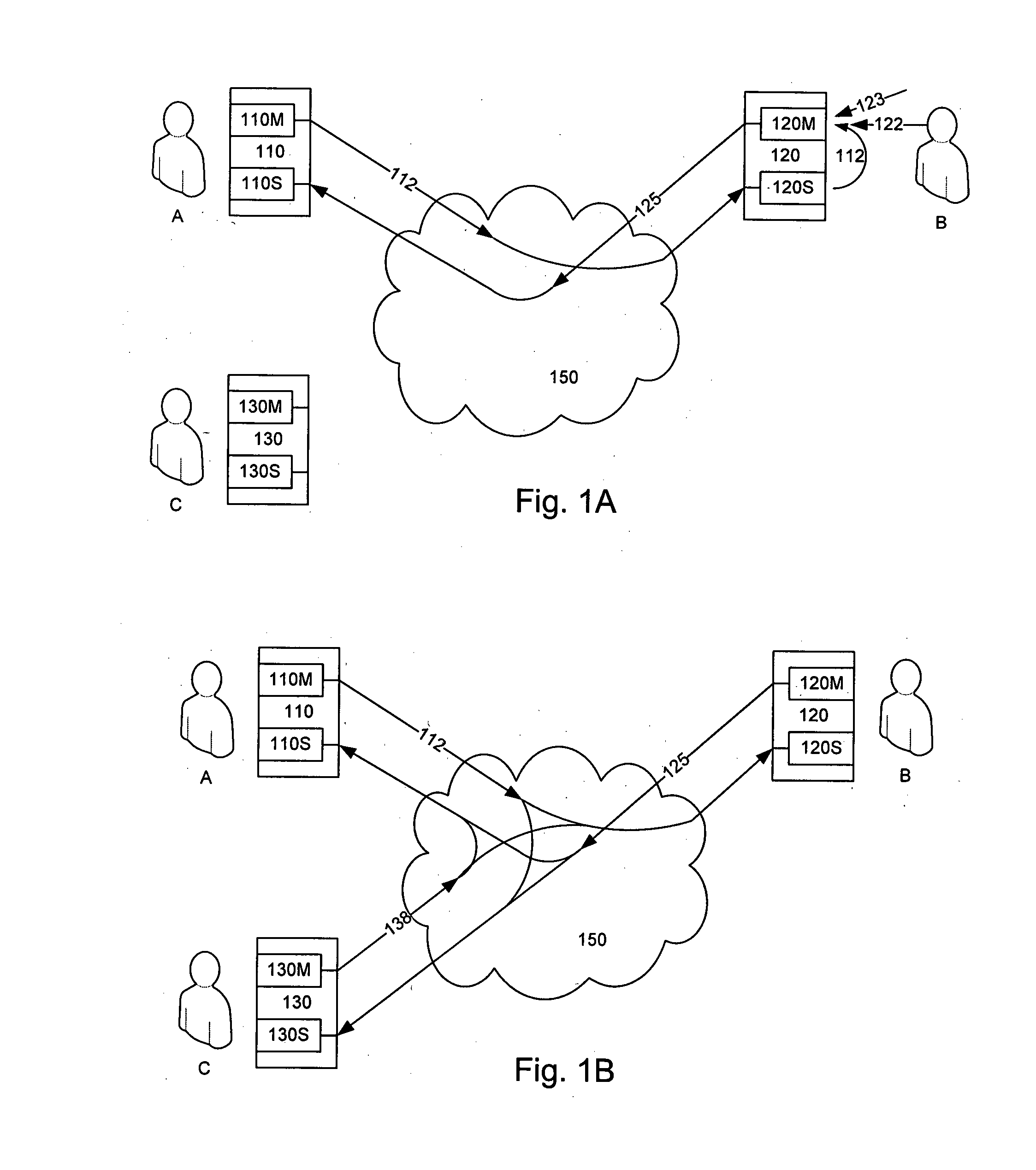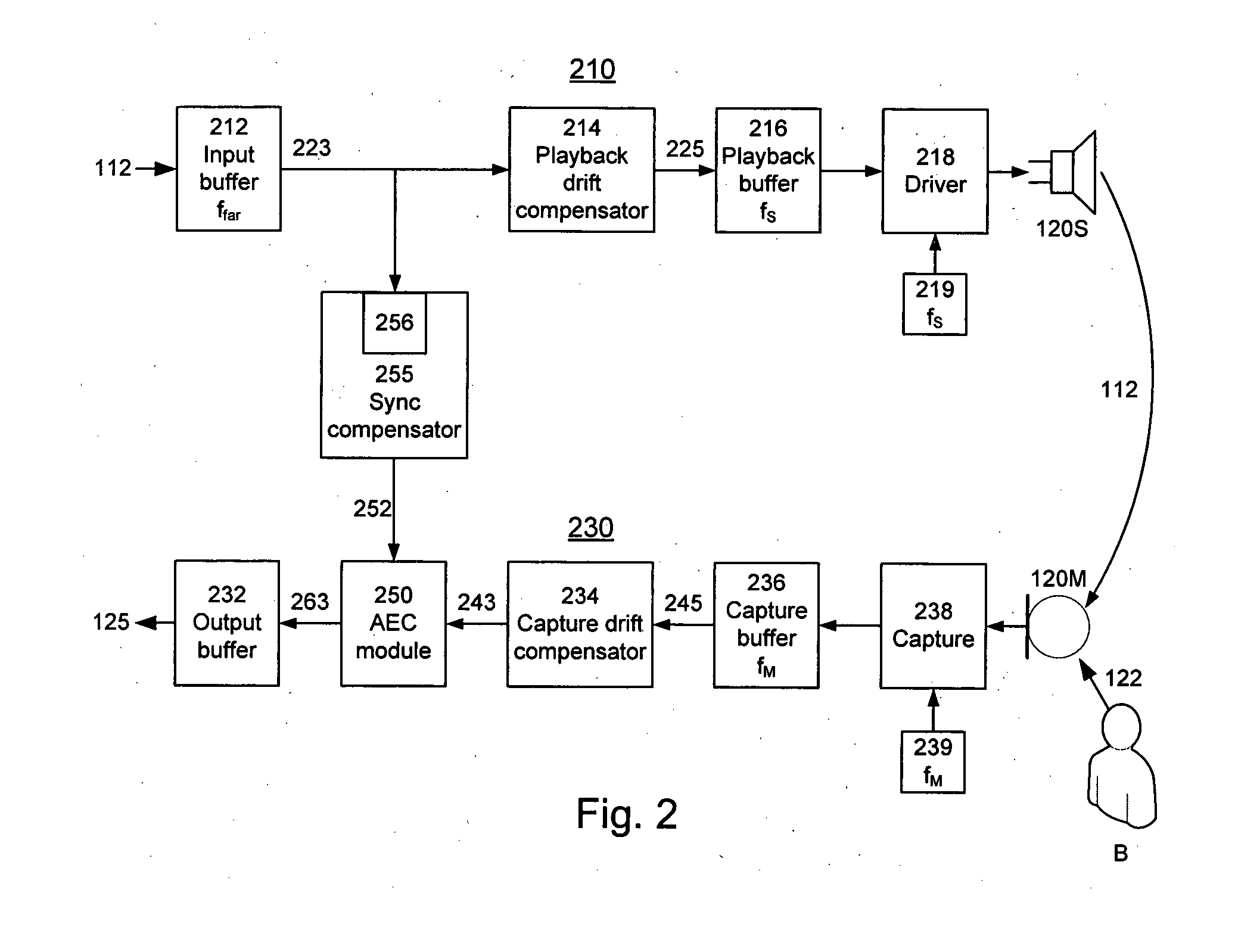Audio Acoustic Echo Cancellation for Video Conferencing
a technology video conferencing, applied in the field of audio acoustic echo cancellation, can solve the problems of affecting the quality of the recording, the cancellation technique does not seem to work well, and none of the cancellation techniques seem to work well
- Summary
- Abstract
- Description
- Claims
- Application Information
AI Technical Summary
Benefits of technology
Problems solved by technology
Method used
Image
Examples
example 1
Drift Caused by the Capture Process
[0074]Assume that audio is being captured at a nominal frequency of F=16 kHz, and the capture time interval is r=20 ms. Then the number of samples in each capture-time interval (or time step) is L=F×r=320. Suppose that the regression algorithm has been run successfully and has resulted in a slope of x1=1.46. The constant term x2 in the equation, while important for regression computations, is not needed for drift adjustments. A slope of 1.46 means that 1.46 additional samples are being captured for every time step (or for every 320 samples). The drift interval is then I=1+320 / 1.46=220.18. Therefore for every 220.18 samples, one additional sample is captured. Thus we should remove this extra sample for every 220.18 samples either by some means of resampling or simple deletion. Of course, the samples are integral so appropriate adjustments should be made. When to adjust would depend on the software developer and the DSP requirements. It could be to r...
example 2
Drift Caused by the Playback Process
[0075]The approach for adjusting samples during playback is similar to that for the capture process. The main difference is that now if x1>0 then a sample is added every / samples and if x11=1.46. Now a slope of 1.46 implies that 1.46 additional samples are required for playback for every time step (or for every 320 samples). The drift interval is then I=320 / 1.46=219.18. Therefore for every 219.18 samples, one additional sample is required for playback. Thus we should add an extra sample every 219.18 samples either by some means of resampling or simple addition. If the slope x1 is negative then we would need to delete a sample every I samples.
3. Synchronization Compensator
[0076]The sampling frequencies of the far-end and mixed audio streams should match for AEC to work well. By ensuring that capture and playback audio signals are both provided at the nominal frequency (for example, 16 kHz), we can meet this criterion. This can be accomplished by dri...
PUM
 Login to View More
Login to View More Abstract
Description
Claims
Application Information
 Login to View More
Login to View More - R&D
- Intellectual Property
- Life Sciences
- Materials
- Tech Scout
- Unparalleled Data Quality
- Higher Quality Content
- 60% Fewer Hallucinations
Browse by: Latest US Patents, China's latest patents, Technical Efficacy Thesaurus, Application Domain, Technology Topic, Popular Technical Reports.
© 2025 PatSnap. All rights reserved.Legal|Privacy policy|Modern Slavery Act Transparency Statement|Sitemap|About US| Contact US: help@patsnap.com



